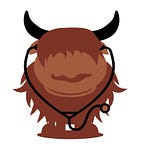A Time for Telemedicine: Digital Transformation by necessity in the Age of COVID19
The current global health emergency necessitates new ways of providing healthcare. In order to reduce risk of transmission, interaction with patients and sharing healthcare information has needed to rapidly enter a virtual era. For telehealth in 2020, necessity has been the mother of both invention and change.
I work in Ophthalmic practice in the United Kingdom. In my work, the prolonged exposure and close proximity between doctor and patients increases the risk of transmission, and degree of viral load (how many virus particles enter your body on exposure). Indeed, I am currently on day 11of suspected COVID19 (due to government policy in the UK, I cannot yet be tested despite being a frontline NHS worker) and still have flu symptoms.
Already, my hospital is testing telemedicine options, as video and telephone consultations will become the norm, to reduce the risk of transmission and prevent paralysis of the healthcare system.
Both triage and consultations themselves lend themselves to video and teleconsultations. In Ophthalmology and ENT, there is a greater risk of transmission of COVID19. This can be lessened by using methods of near telemedicine, to reduce time required for face-to-face exposure.
There are various different applications and software tools for telemedicine. In the United States, HIPAA compliance rules are used to ensure that electronic protected health information (EPHI) is secure, not vulnerable to accidental or malicious breaches, and only accessible by authorized users. The guidelines also require mechanisms in place so communications can be monitored and remotely deleted if necessary, and for an automatic log-off to occur if a systemic is unused for a period of time. HIPAA guidelines consider unsecure channels of communication such as SMS, WhatApp, Skype and email are considered risky for communicating EPHI at distance, particularly as they remain on service providers’ servers, and contain identifiable healthcare information.
However, there are a number of applications which self-report as HIPAA compliant. Some of the more established options are (current pricing information included, if available online):
- AccuRX https://www.accurx.com/ Free for NHS Use
- Attend Anywhere https://www.attendanywhere.com/ £264 to £312 per user per year
- Doxy.me https://doxy.me Pricing: Free (no HD) to $35 professional, $50 clinic
- Google G Suite Hangouts Meet https://gsuite.google.com/intl/en_uk/pricing.html £4.14 per user per month for Basic, £8.28 per user per month for Business and £20 per user per month for Enterprise.
- Pando https://pandomeetings.com/
- Skype for Business/Microsoft Teams https://products.office.com/en-gb/microsoft-teams/group-chat-software?rtc=1 Free for Microsoft Teams, £3.80 per month for Business Essentials, £9.40 per month for Business Premium
- TrusteDoctor https://trustedoctor.com/
- Updox https://www.updox.com/
- VSee https://vsee.com/ Basic from $49, Enterprise “Contact Sales”
- Zoom for Healthcare https://zoom.us/healthcare Basic Free. Pro £11.99/month. Business 15.99/month
There are also new HIPAA-compliant free-to-use videocall sites to enable COVID19 afflicted patients to communicate with healthcare providers, and there are likely to be a number of other free telehealth options emerging over the coming weeks.
Ideally, these applications should be prioritised in order to ensure security of data and conformity with General Data Protection Regulation (GDPR) in the United Kingdom. Clearly, these are unique circumstances. NHSX has offered new Information Governance guidance which includes a strong indication from Information Commissioner about flexibility at the current time:
“The health and social care system is going to face significant pressures due to the COVID-19 outbreak. In the current circumstances it could be more harmful not to share health and care information than to share it. The Information Commissioner has assured NHSX that she cannot envisage a situation where she would take action against a health and care professional clearly trying to deliver care”
Therefore, where the aforementioned apps are not available, NHSX states that “it is fine to use video conferencing tools such as Skype, WhatsApp, Facetime as well as commercial products designed specifically for this purpose”. Obviously, it is important to avoid video communication applications which are public-facing, such as TikTok, Twitch, Facebook Live.
As clinical care evolves during the coming weeks of the pandemic, the use of telemedicine will move from a predominantly triage role to one of clinical management. A key feature will be the ability to transfer interpretable images and videos for diagnosis. If these unprecedented times have one positive outcome, it will be a rapid digital transformation to allow remote diagnosis and delivery of healthcare.
